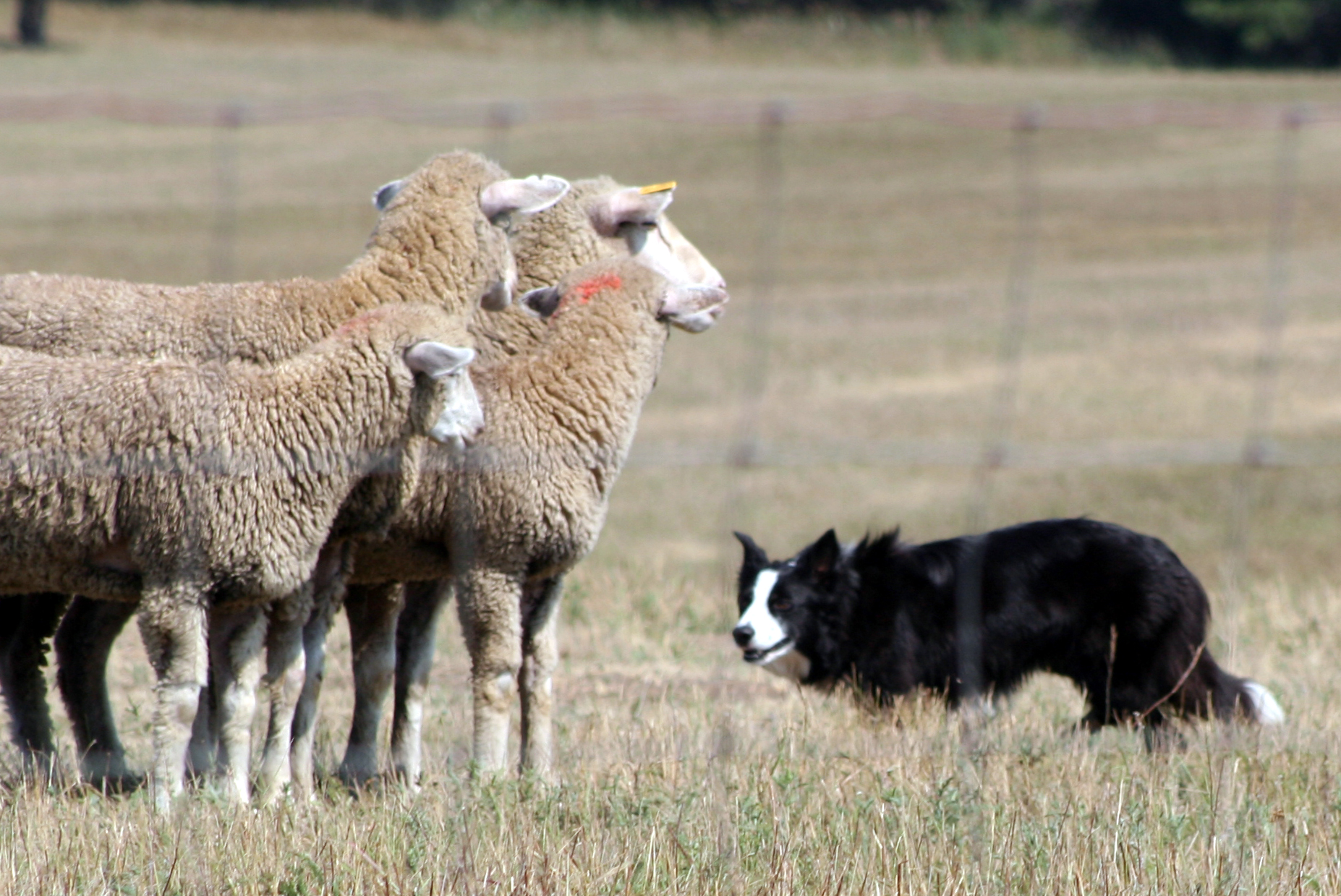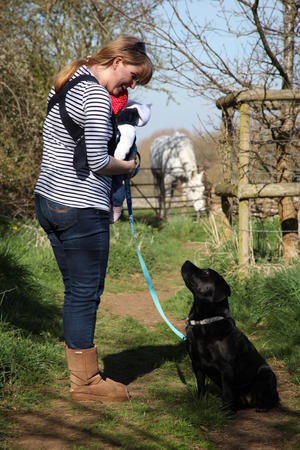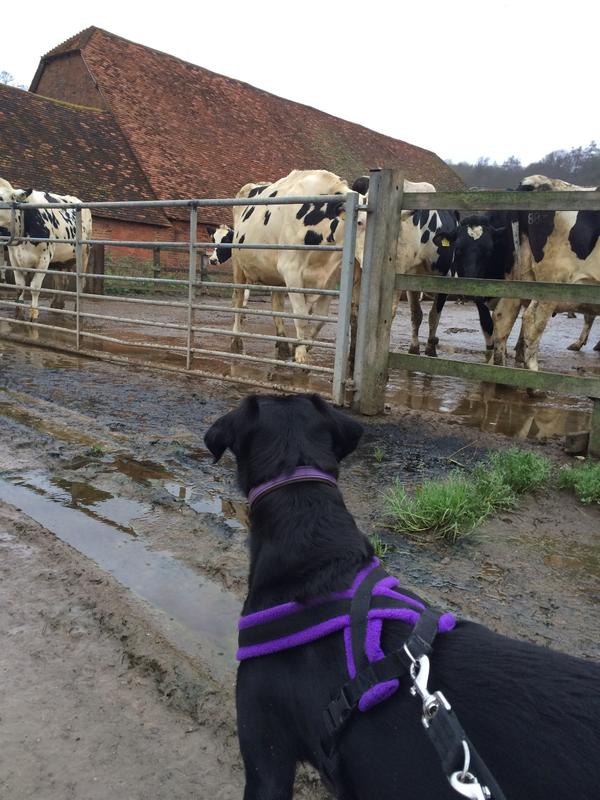
Dogs and livestock
However much we love our dogs, they can still cause significant harm to livestock. It's also a criminal offence to allow your dog to chase or attack livestock.
Taking a walk through the beautiful British countryside is one of the great joys of dog ownership, but many fields are shared with livestock. It is your responsibility to make sure your dog is walked safely where livestock are, or may be, present. The best way of doing this is making sure they're on a short lead.
Why is livestock at risk from dogs?
It's natural for dogs to enjoy chasing moving objects, but this can be very problematic when it's directed towards livestock. Some breeds may be more likely to chase than others, particularly those that have been bred for hunting or herding.
Many dogs do walk calmly on the lead around livestock, but anything can happen and it's always better to be safe than sorry.
Dogs chasing livestock
Sheep, cows, pigs, goats, chickens and other animals are easily worried by things that could threaten them.
Dogs who chase – even if they do not catch or bite the livestock – can still cause physical harm to farm animals by running towards them. When livestock are panicked, they may:
- run away from danger, which can cause injury such as broken bones
- bunch themselves together tightly in a group, which can also cause injury and fatalities
- miscarry their unborn young due to worry
Important
Always ensure your garden fencing is secure. Most attacks happen when dogs escape.
Is livestock worrying a criminal offence?
It goes without saying that dogs should not be allowed to wound livestock. But, even if your dog does not wound an animal, livestock worrying (chasing or attacking) is still a criminal offence. Your dog does not have to physically harm a farm animal for you to be prosecuted.
By law, farmers on their own land are also allowed to shoot dogs who worry their animals as a last resort.
Read about the laws dog owners need to know.
What if someone else is walking my dog?
If your dog goes to stay with family or friends or is walked by someone else when you're not there, then legally, it is both of your responsibility to keep your dog under control. We recommend discussing situations where you might want your dog to stay on a lead, like around livestock, with anyone who is walking your dog.
How to keep your dog and livestock safe on walks
Before you go
- Dogs who are ordinarily calm and focused at home or on their usual walks can become distracted and behave differently when in a rural environment where their sense of smell and chase instinct are easily stimulated. Even though your pet walks on lead without pulling or comes back immediately when called in the park, the enticing new countryside environment may make them forget your careful training.
- Plan ahead before walking in the countryside. Take tasty treats with you to keep your dog focused on you and serve as a distraction if they become interested in livestock. Work on their recall so you can call your dog back to you when you need to, as well as sit, down and stay so you can keep your dog still when you need to remain calm around other animals. Reward your dog for calm behaviour around animals.
- Get puppies and older dogs used to livestock soon after you get them. Gradually expose your new pet to livestock from a distance while on a lead and reward calm and relaxed behaviour with lots of treats.
More on puppy socialisation.
On a walk
- Look out for signage about livestock in fields
- If you decide to let your dog off in a field without livestock, always call them back when you're going into a new field where you cannot see whether there is livestock present
- If you can see farm animals, or if you think you may come across them on your walk, keep your dog on a short lead. While there’s no law requiring you to keep your dog leashed, it will give you peace of mind that they will be unable to chase livestock.
- Don't pass between and separate adult sheep or cows from their young. They may act aggressively to protect their lambs or calves.
- Don't panic if a cow approaches you gently – they are inquisitive animals. Walk away calmly.
- If you and your dog are chased or charged at, let go of your dog's lead. It's usually the dog they see as a threat rather than you and most dogs can easily outrun a cow but the majority of us humans cannot.
You might also be interested in our advice on dogs and deer.
Important
Even if you are confident that your dog will not chase livestock, most livestock will find it stressful if a dog comes too close to them.
Picking up poo in the countryside
Remember to bag and bin your dog's poo when they go to the toilet in the countryside, and keep their worming treatment up to date. You can throw it away in any public bin.
Leaving your dog’s poo in a field where livestock live can spread disease that can harm the animals that munch on the grass in the area. Bagged poo left hanging on trees or in a field also poses a risk to animals, who may eat the whole thing and become unwell.
[Pictured at top of webpage: A collie herds a flock of sheep. Photo by C. MacMillan. Licensed for reuse under Creative Commons.]
Page details
Reviewed
• 23 March 2023
Next review
• 20 March 2026







